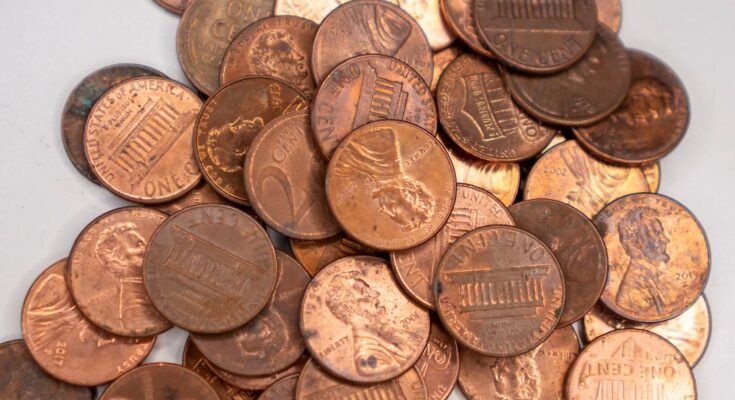Little money for high pricesThe US government abolishes the penny – should Germany follow suit?

The US government under Donald Trump phased out the cent, citing high production costs. Even in Europe, the cost of producing one- and two-cent coins was more expensive than their return value.
“If you don’t value a penny, you’re not worth being a thief,” as the saying goes – or in the comic Donald Duck. In the US, the reality has long been different: the smallest dollar coins, also called pennies, usually lie around unused because they have almost no value. This has long bothered Donald Trump. “For too long, the United States has been making money that is actually worth more than two cents. It is simply wasteful!” complained the US President in February on his own social media platform “Truth Social” and announced that he would abolish the cent.
This week, the U.S. Treasury Department finally announced the completion: After more than 230 years of coin production, the last one-cent coin was officially minted at the U.S. Federal Reserve. According to the US Treasury Department, stopping coin production is expected to save approximately $56 million in material costs. Producing a penny recently cost nearly 3.7 cents.
In these countries, one cent coins are not required
Discussions have also been going on for a long time in the euro area: about 1.65 cents are used to produce a euro cent coin, that is, more than the value of the coin. In early 2020, the EU Commission submitted a draft on how to remove small steel coins with a copper coating. Finland and the Netherlands are pioneers here. Since the early 2000s, these amounts have been rounded to such an extent that one- and two-cent coins have become virtually obsolete in everyday life. Belgium, Ireland and Italy followed suit in 2014.
euroCoin statistics from ECB
Germany is considered the country of penny pinchers. The Bundesbank now also supports rounding rules to limit the number of cent coins. According to the latest Eurobarometer survey, a small majority (53 percent) of Germans would support this. Across the euro area, approval was 61 percent.
Since most consumers receive more change than they spend, the nation’s mints must continually ensure supply. Between 2002 and 2013 alone, EU countries had to raise around 1.4 billion euros for production.
Production of these coins costs millions every year
In the end, small change often disappears unused in trouser pockets, sofa gaps, and piggy banks or jars. Over time, more and more one and two cent coins came into circulation. According to the latest figures from the European Central Bank, there are currently more than 40 billion one-cent pieces in circulation in the euro area, which is equivalent to more than a quarter of all euro coins. However, European pennies only account for slightly more than one percent of the total value of pennies.
By eliminating one- and two-cent coins, Germany could save millions in costs each year, supporters of the rounding rule say. But there are also good arguments for saving the smallest amount. In the retail sector, for example, the cent is important – a price tag of 99 cents looks more attractive than the usual euro value.
Many people in the US have also expressed concern about the impact of Trump’s ban on small change. One-cent coins will still remain in circulation – there are said to be around 300 billion left. People can still pay with it. However, the money lost will not be replaced. Some stores are already showing a “penny shortage” and economic experts warn that the elimination of the one-cent coin could be a driver of inflation if retailers quickly adjust their prices to multiples of five – and “forget” to round them up every once in a while.


